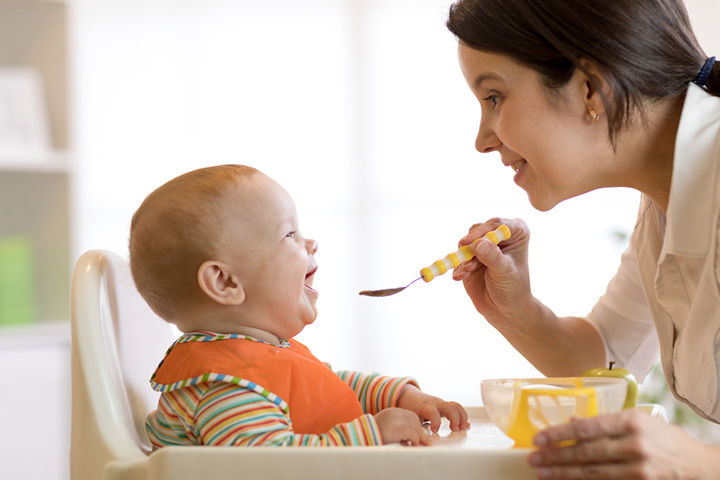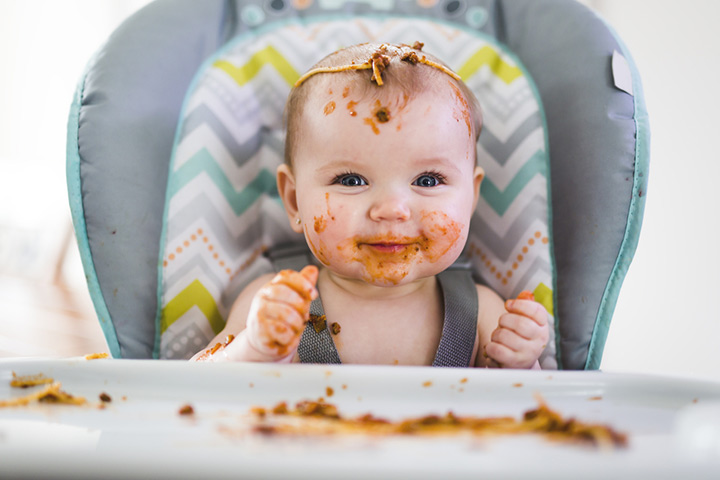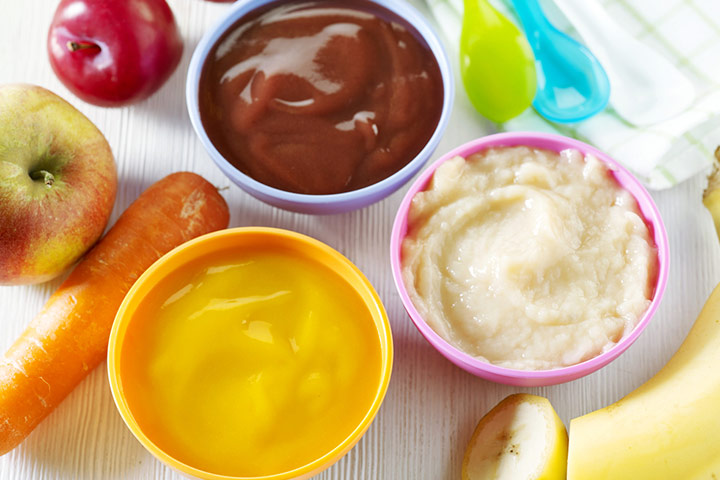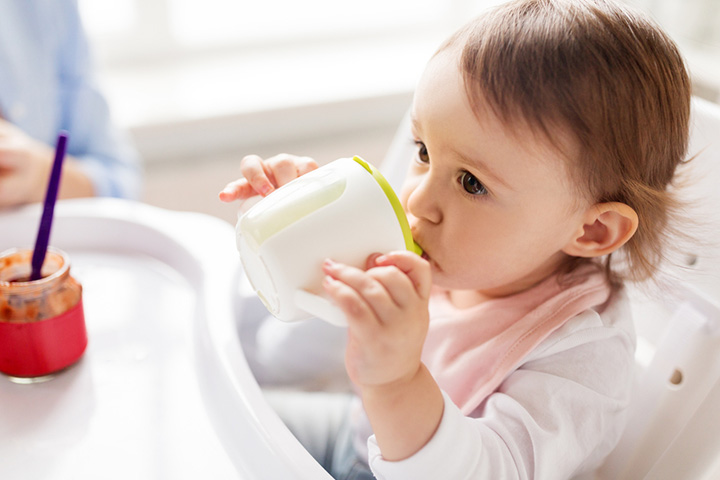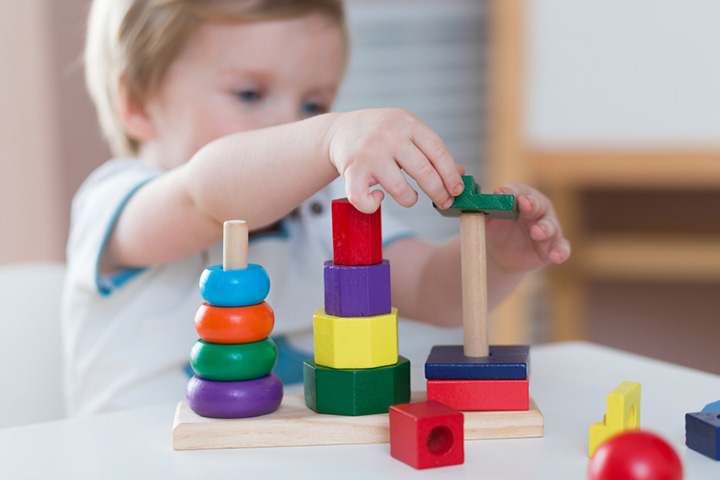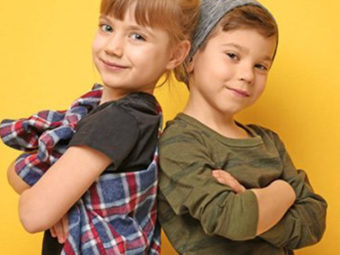
我们一直看到和婴儿puttin被警告g things into their mouths — both edible and non-edible. Considering how this has always been the case, it may come as a surprise when your child is one among the few who refuses to eat finger foods by themselves. Just as the name suggests, finger foods are small pieces of soft, easy-to-chew tidbits of food that your little one can easily pick, hold on to, and eat on their own, without your help. Your child’s interest in picking up finger foods and eating them is a significant step towards eating their food independently. So, what do you do when your toddler doesn’t show much interest in doing what could be the most essential step to survival — eating their own food? Let’s find out!
When Do Children Start Eating On Their Own?
Up until the age of six months, babies are highly dependent on their mothers for breast milk or baby formula. A baby’s motor skills begin to develop at around three months, until which they can move their hands and feet but can’t exactly grasp an object. Soon enough, by the time your child is around eight months of age, they will be able to grasp an object with better direction and hand-eye coordination. Around this time, babies can ingest solid foods. They can also pick food and put it in their mouth without your intervention (1) (2).
How To Help Your Child Eat On Their Own
Some children learn quickly, while others may need a little hand-holding. Here’s what you can do to help your child explore the world of food and begin eating on their own:
1. Be Patient
No two children are the same. It’s easy to watch your neighbor’s child or your nephew eating away to glory with no qualms and compare them with your child — but don’t do that. Children overcome milestones at their own pace. It is also natural to compare your first child’s eating habits (and everything else) with the second. You need to know that doing this will only bring about misery, both for you and your child. It will also become a nasty habit in the long run, where you compare the wins and losses of one child against the other. Instead, what you can do is let your child spend time and play with other kids. This way your child might pick up some habits automatically from the company without needing your intervention at all.
2. Don’t Stop Spoon Feeding Your Child
Some parents might resort to a more drastic measure and stop feeding their children with spoons altogether. While they may think that this would speed up the process of their child learning to eat on their own, this is far from the truth. Children learn things at their own pace and that is the best way to learn. Your little one can learn to pick up food and eat it while still being fed by spoon. Coax them gradually by offering finger foods like pieces of fruits in between the main meals. Also, demonstrate how to handle bits of food so that they can learn by watching you.
3. It’s Okay For Them To Make A Mess
的第一件事你会看到简述ce your child to feeding themselves is food flung all over the place. This isn’t your child trying to be naughty. Your little one is probably still trying to come to terms with the fact that they have the extraordinary ability to grasp and throw! The whole idea of seeing things fly across the room probably fascinates them — it’s messy, but it’s okay. It’s part of their learning process. Additionally, your little one is also probably trying to understand different textures. Toys are mostly hard or soft, depending on the type, but food can be kind of mushy; let your child feel it and try to understand it (2).
4. Try Different Foods
Sometimes, it could be that your child is a fussy eater and has specific preferences when it comes to food. Maybe the mashed vegetables you give aren’t the most favorite dish on the planet. Yes, just like adults, babies have their own preferences too. You could try experimenting with different kinds of foods, such as mashed potatoes with rice and finger foods such as tofu cubes, pasta spirals, pieces of bread, or small pieces of chicken. Add more color to the plate, too, as babies love color! You could do this with colorful vegetables such as carrots, yellow bell peppers, beans, tomatoes, and peas.
5. Help Them Drink From A Cup
Baby bottles or cups usually come with handles for easier grasp. You can slowly introduce them to the idea of drinking with a cup once in a while. This can help them work on their grasping skills and motor skills as well. Buy a cup that is colorful, and train your baby to drink water from it. The transition from feeding bottle to cup is a milestone in itself, and it can help develop your baby’s hand-to-eye coordination, which can help your baby handle finger foods better.
6. Introduce Toys That Encourage Grasping And Improve Motor Skills
For babies, the ability to properly grasp and handle things depends on the development of their motor skills. Research shows that when babies are trained in the development of their motor skills even as early as three months of age, the chances of having better movement and object handling later become higher (3). Toys are an excellent way to develop motor skills for children. Toys draw them in and keep them engaged, letting them utilize their creativity while playing, solving puzzles, and using various muscle groups.
It takes patience and time for your child to learn and understand different milestones; this holds true for eating their own food as well. Some kids get there fast, while others take their time. Cut your child some slack, and don’t be too worried about your child’s eating habits. However, if your child seems to show a lack of appetite, you might want to consult the healthcare provider. What are some of the things you did to get your child to eat on their own? Let us know in the comments below!
References:
- Mothers’ Understanding of Infant Feeding Guidelines and Their Associated Practices: A Qualitative Analysis
https://www.ncbi.nlm.nih.gov/pmc/articles/PMC6479610/ - The Development Of Motor Behavior
https://www.ncbi.nlm.nih.gov/pmc/articles/PMC5182199/ - Motor Training At Three Months Affects Object Exploration 12 Months Later
https://www.ncbi.nlm.nih.gov/pmc/articles/PMC4916043/



